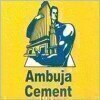Filter interviews by
Dalmia Bharat Cement Electrical Engineer Interview Questions, Process, and Tips
Dalmia Bharat Cement Electrical Engineer Interview Experiences
2 interviews found
I applied via LinkedIn and was interviewed before Dec 2023. There was 1 interview round.
(2 Questions)
- Q1. What is the process of power distribution?
- Ans.
Power distribution is the process of delivering electricity from power plants to consumers through a network of transmission and distribution lines.
Electricity is generated at power plants using various sources such as coal, natural gas, nuclear, or renewable energy.
The electricity is then transmitted at high voltages over long distances through transmission lines to substations.
At substations, the voltage is reduced a...
- Q2. What are the different types of sources of electricity?
- Ans.
Different types of sources of electricity include fossil fuels, nuclear power, renewable energy sources, and batteries.
Fossil fuels (coal, oil, natural gas)
Nuclear power
Renewable energy sources (solar, wind, hydro, geothermal)
Batteries (lithium-ion, lead-acid)
Interview Questionnaire
4 Questions
- Q1. 1. Induction motor starting principle
- Ans.
The induction motor starting principle is based on the creation of a rotating magnetic field.
An induction motor starts by applying a voltage to the stator windings, creating a rotating magnetic field.
The rotating magnetic field induces currents in the rotor windings, which in turn creates a magnetic field.
The interaction between the stator and rotor magnetic fields causes the rotor to start rotating.
Different methods l...
- Q2. 2. Describe about transformer parts.
- Ans.
Transformer parts include core, windings, insulation, and cooling system.
The core is made of laminated iron or steel and provides a path for magnetic flux.
Windings consist of primary and secondary coils, which are insulated copper wires.
Insulation materials like paper, varnish, or oil are used to insulate the windings.
Cooling systems such as fans, radiators, or oil pumps are used to dissipate heat.
Other parts include b
- Q3. 3. How over current protection, differential protection and earth fault protection work.
- Ans.
Over current protection, differential protection, and earth fault protection are methods used to safeguard electrical systems.
Over current protection is used to detect and interrupt excessive current flow in a circuit.
Differential protection compares the current entering and leaving a component to detect faults.
Earth fault protection detects current leakage to the earth and isolates the faulty circuit.
Over current prot...
- Q4. 4. Cable construction and its layer.
- Ans.
Cable construction involves multiple layers for insulation and protection.
Cables are typically constructed with multiple layers for insulation and protection.
The innermost layer is the conductor, usually made of copper or aluminum.
The next layer is the insulation, which can be made of materials like PVC, polyethylene, or rubber.
Additional layers may include shielding to protect against electromagnetic interference.
The ...
Top trending discussions






Interview questions from similar companies

I appeared for an interview in Jul 2020.
Interview Questionnaire
1 Question
- Q1. Process parameters, fan flow calculation quality related questions
Interview Preparation Tips
Process parameters flow calculation etc.

I applied via Company Website and was interviewed in May 2019. There were 4 interview rounds.
Interview Questionnaire
1 Question
- Q1. I had been questioned about mechanical maintenance and condition monitoring field
Interview Preparation Tips

I applied via Naukri.com and was interviewed in May 2019. There were 3 interview rounds.
Interview Questionnaire
3 Questions
- Q1. What is your individual capabilities ?
- Q2. How is your current position which defines different from others ?
- Ans.
My current position involves leading cross-functional teams and driving technical innovation.
I am responsible for leading a team of engineers in developing new products and technologies.
I work closely with other departments such as marketing and sales to ensure alignment on project goals.
I am involved in setting technical direction and strategy for the team, as well as mentoring junior engineers.
I have successfully imp...
- Q3. Why would you want relocate?
Interview Preparation Tips

I applied via Campus Placement and was interviewed before Jul 2020. There were 2 interview rounds.
Interview Questionnaire
2 Questions
- Q1. Technical what is boiler Turbine etc
- Q2. Safety environment asspect and impacts
Interview Preparation Tips

I applied via Naukri.com and was interviewed before Mar 2021. There were 4 interview rounds.
Technical questions related to domain.
(1 Question)
- Q1. What is carbonation.
- Ans.
Carbonation is the process of dissolving carbon dioxide gas in a liquid.
Occurs naturally in carbonated mineral water
Used in the production of carbonated beverages
Can affect the pH of a liquid
Can cause corrosion in concrete structures
(6 Questions)
- Q1. What is your family background?
- Q2. What are your salary expectations?
- Q3. Why should we hire you?
- Q4. Why are you looking for a change?
- Q5. What are your strengths and weaknesses?
- Q6. Tell me about yourself.
Pratical test by Auto level.
Interview Preparation Tips

Interview Questionnaire
1 Question
- Q1. What is your salary expectation -?

I applied via Job Fair and was interviewed in Sep 2024. There was 1 interview round.
(5 Questions)
- Q1. What is Ohm's Law?
- Ans.
Ohm's Law states that the current flowing through a conductor is directly proportional to the voltage applied across it, and inversely proportional to the resistance of the conductor.
Ohm's Law is represented by the formula V = IR, where V is voltage, I is current, and R is resistance.
It helps in calculating the relationship between voltage, current, and resistance in an electrical circuit.
For example, if a circuit has ...
- Q2. What are Transformer protection?
- Ans.
Transformer protection refers to the measures taken to ensure the safe operation of transformers and prevent damage.
Overcurrent protection: Protects against excessive current flow.
Overvoltage protection: Safeguards against high voltage levels.
Overtemperature protection: Prevents overheating of the transformer.
Differential protection: Detects internal faults by comparing input and output currents.
Buchholz relay: Detects...
- Q3. Your computer knowledge?
- Ans.
Proficient in computer hardware, software, and programming languages relevant to electrical engineering.
Skilled in using CAD software for circuit design
Familiar with programming languages like C, Python, and MATLAB for simulations
Knowledge of microcontrollers and embedded systems programming
Experience with PLC programming for automation systems
- Q4. What is motor protection?
- Ans.
Motor protection is a system designed to prevent damage to motors from electrical faults or overloads.
Motor protection devices include overload relays, thermal protectors, and circuit breakers.
These devices monitor the current and temperature of the motor to prevent overheating and damage.
Motor protection also involves proper grounding, insulation, and regular maintenance to ensure safe operation.
Examples of motor prot...
- Q5. What is your hobbies?
- Ans.
My hobbies include playing the guitar, hiking, and photography.
Playing the guitar helps me relax and express my creativity.
Hiking allows me to explore nature and stay active.
Photography is a passion of mine, capturing moments and scenes in a unique way.

I applied via Indeed and was interviewed in Jul 2023. There were 2 interview rounds.
(2 Questions)
- Q1. Erection of the cement mill
- Ans.
The erection of a cement mill involves the installation and assembly of the mill equipment and machinery.
The cement mill is typically a large cylindrical structure where raw materials are ground into fine powder.
The erection process includes the installation of the mill shell, liners, diaphragm, and grinding media.
Proper alignment and leveling of the mill components are crucial for efficient operation.
Electrical and me...
- Q2. Procedure of erection
- Ans.
The procedure of erection involves the process of assembling and installing structural components to create a stable and functional structure.
Planning and preparation
Site preparation and foundation
Assembly of structural components
Installation of utilities and systems
Finishing and testing
Final inspection and handover
(1 Question)
- Q1. Planning of the erection
- Ans.
Planning of the erection involves creating a detailed plan for the construction process.
Identify the scope and objectives of the project
Determine the sequence of activities and their dependencies
Allocate resources and manpower
Create a schedule and timeline
Consider safety measures and risk management
Coordinate with other teams and stakeholders
Monitor progress and make adjustments as necessary
Dalmia Bharat Cement Interview FAQs
Tell us how to improve this page.
Dalmia Bharat Cement Interviews By Designations
- Dalmia Bharat Cement Sales Officer Interview Questions
- Dalmia Bharat Cement Technical Support Engineer Interview Questions
- Dalmia Bharat Cement Executive Interview Questions
- Dalmia Bharat Cement Mechanical Maintenance Engineer Interview Questions
- Dalmia Bharat Cement Area Sales Officer Interview Questions
- Dalmia Bharat Cement Assistant Manager Interview Questions
- Dalmia Bharat Cement Graduate Engineer Trainee (Get) Interview Questions
- Dalmia Bharat Cement Area Sales Manager Interview Questions
- Show more
Interview Questions for Popular Designations
- Electrical Supervisor Interview Questions
- Junior Engineer Electrical Interview Questions
- Electrical Technician Interview Questions
- Assistant Electrical Engineer Interview Questions
- Electrical Maintenance Engineer Interview Questions
- Diploma Electrical Engineer Interview Questions
- Manager – Electrical Interview Questions
- Electrical Maintenance Technician Interview Questions
- Show more
Dalmia Bharat Cement Electrical Engineer Interview Process
based on 2 interviews
Interview experience
Electrical Engineer Interview Questions from Similar Companies
Fast track your campus placements
Dalmia Bharat Cement Electrical Engineer Reviews and Ratings
based on 15 reviews
Rating in categories
|
Assistant Manager
467
salaries
| ₹5.3 L/yr - ₹15 L/yr |
|
Deputy Manager
295
salaries
| ₹7.1 L/yr - ₹23.5 L/yr |
|
Senior Executive
275
salaries
| ₹4.2 L/yr - ₹11 L/yr |
|
Sales Officer
241
salaries
| ₹2.5 L/yr - ₹8.5 L/yr |
|
Executive
190
salaries
| ₹2.6 L/yr - ₹8.2 L/yr |

UltraTech Cement

JK Cement

Grasim Industries

ACC
- Home >
- Interviews >
- Dalmia Bharat Cement Interview Questions >
- Dalmia Bharat Cement Electrical Engineer Interview Questions















